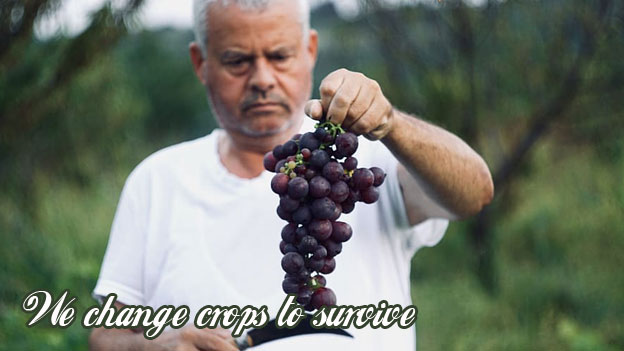The agriculture sector is struggling with one of the biggest challenges in history.
The increase in temperatures (between 1.4 ºC and 3.9 ºC) as a direct consequence of the emission of greenhouse gases has begun to have a direct negative impact on plant and livestock species in Europe. Climate change is changing our agricultural landscape because the new environmental conditions are replacing the “traditional” crops of our agricultural areas with others that are more adapted to the new environmental conditions.
Citrus changed to mango and avocado in Sicily.
This is the case of Sicilian citrus producers whose harvest has practically disappeared due to the drought and extreme heat in Sicily. They have been forced to replace production with mangoes and avocados more typical of a tropical climate; a climate that seems to be prevailing on the island.
Italy, the world’s second biggest olive oil producer, experienced a disastrous harvest in 2018. Inclement weather and frost reduced production by 57% to $1.13 billion.
Loss of wine production in France
France’s agriculture is also going through a disastrous year because of poor weather conditions. The grape harvest, and with it, the production of wine, are announced catastrophic due to the frosts that were registered in spring, followed by a rainy summer that favored the appearance of diseases. A decline in wine production in the range of 24-30% is expected..
In Germany it does not rain for the third year
For the third year German farmers in Saxony are facing crop failure due to insufficient rainfall. With temperatures rising by almost 2 degrees, some farmers in the south have started growing nectarines and apricots.
Wines in the UK
Wine growing, typically associated with the south in France, Spain and Italy, is now taking off in places like Denmark, Sweden and the UK. This is the case of Ryedale Vineyards, in the northeast of England, has produced British wines since 2006. The wine industry appears to quadrupled in size since 2000 due to warming in recent decades.
Pistachios in Spain
The pistachio cultivation area in Spain grew by 37% between 2019 and 2020; an increase in the area is 3,600% in the last decade. And this has been possible. The widespread growth of this crop, which requires cold, wet winters and hot, dry summers. This is largely due to the effects of climate change.
In short, we are currently observing how the European agricultural sector is immersed in a profound process of change. Sustainability, globalization and technological change will define in the new decade a new European agricultural model very different from the one we have known; but also – as we have just read – a new paradigm in the types of crops by regions due to the effects caused by climate change.
In the CONSOLE project look for new contractual relationships that promote several agri-environmentalpublic goods in order to mitigate climate change impacts. If you are interested in knowing more about our case studies, we suggest our deliverable 2.1 “Catalogue of descriptive factsheets of all European case studies”
